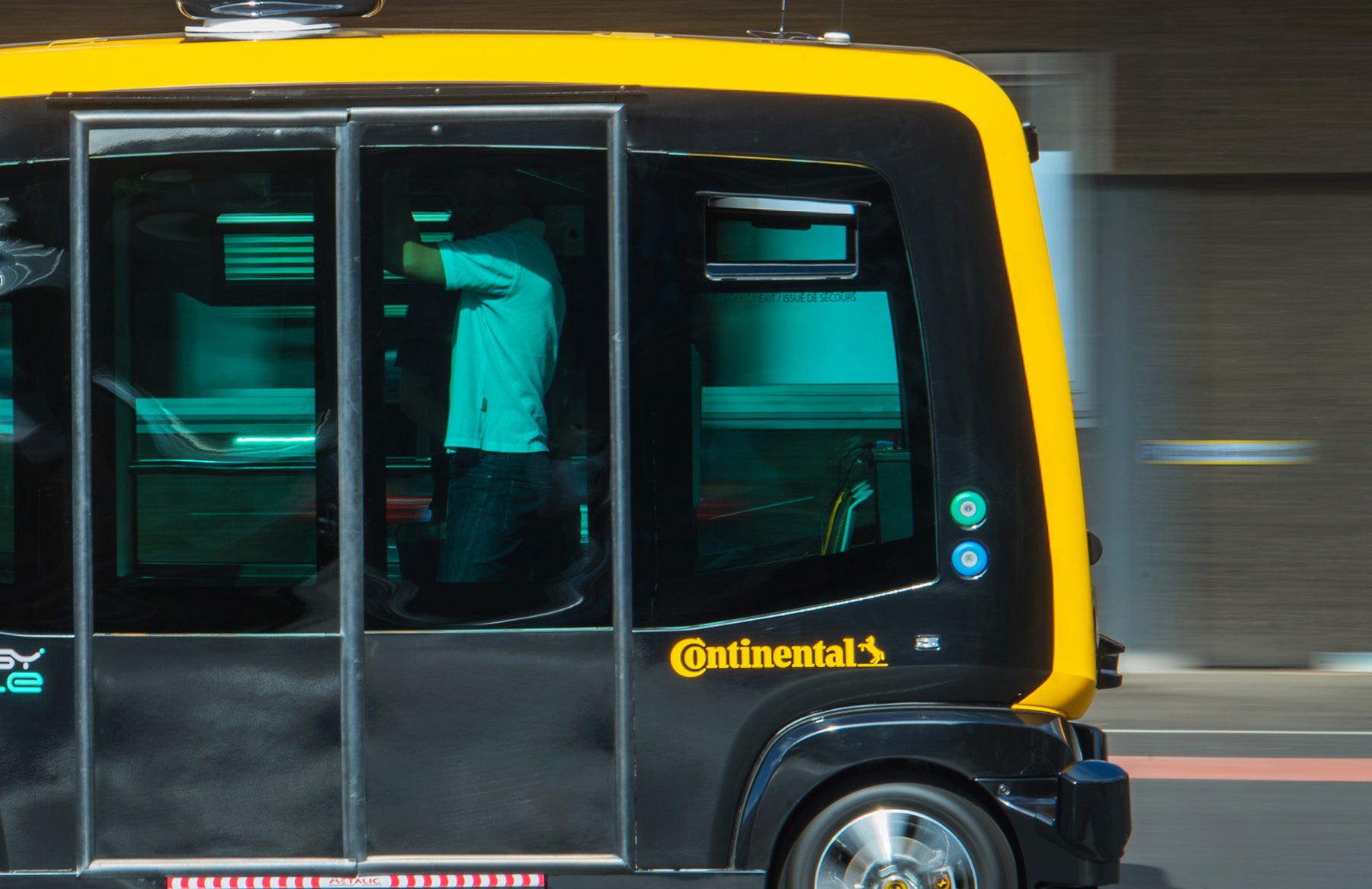
# Technology and Innovation
The tyre of the future... is autonomous
Smart tyres for self-driving cars

Hailing a cab on the side of the street used to be an essential skill for urban living – to master it successfully: you had to spot a free taxi approaching and make yourself noticed with arm-waving. Sometimes you even had to fight off others, who might swoop in when it pulled over. Today, the only things you need are a smartphone, an internet connection and one of countless ride-hailing apps. At the tap of a screen, you can summon a car and driver to take you anywhere you want – no special skills required. But could catching a taxi become even more affordable, accessible, and environmentally-friendly?
Yes! Automated vehicles are the key – and with smart sensors, automatic pressure monitoring and predictive maintenance will make them more reliable, efficient and self-reliant.
Autonomous tyres
- reduce overhauls
- save time and costs
- increase road safety
- prevent accidents and breakdowns
- make tyres last longer
Find out how smart tyres make driverless taxis truly autonomous
Self-driving cars are on the rise, but even without a human driver, autonomous vehicles still require regular service, which has to be performed by humans. If autonomous cars were smart enough to automatically maintain themselves, the entire system would become more efficient, cost-effective, and sustainable – even as vehicle numbers continue to rise.
Self-repairing driverless cars with smart tyres
Smart tyre technology already allows real-time tracking of tyre status, and efficient, preventative maintenance. A new technology goes one step further: Our C.A.R.E™ enables tyres to perform maintenance on themselves. Sensors built into the tread transmit information on tyre temperature and inflation pressure, detecting and warning of possible damage. Their rims are fitted with air pumps that can adjust the tyre pressure while driving. It’s the perfect technology for autonomous vehicles, such as robotaxis, as it removes the need for human involvement in managing tyre safety.
This combination of real-time information and immediate action will reduce repair costs and downtime, with minimal human intervention. A robotaxi concept tyre designed by us offers all these cutting-edge features, along with the ideal specifications for urban, autonomous, and electric mobility. It also has the ideal profile and contour, the optimal tyre size with minimum rolling resistance and a cavity-pattern concept that minimises noise and maximises grip.

Autonomous tyres enhance self-driving robotaxis
Sounds futuristic? Sure, but the technology of the future is already becoming a reality. Members of the public have had the opportunity to ride in a robotaxi equipped with intelligent tyres at trade fairs like the IAA in Frankfurt and the CES in Las Vegas, and the autonomous vehicle technology behind it is already being used in public transport pilot projects, for example in the US, Japan, China, Singapore, and Germany.
Being chauffeured to your destination by an electric car with autonomous technology may still seem like high-tech luxury, but once self-driven public transport becomes widespread on public roads, it will lower the cost of urban mobility – if maintenance costs can be kept to a minimum.

How smart tyres make autonomous driving more affordable
The biggest drop in price for driverless taxis would indeed be the elimination of the human driver, which is currently responsible for 45% of the operating costs of a ride-hailing vehicle. Self-driving cars enable optimal positioning of vehicles in central locations, allowing small fleets to provide ideal coverage across popular areas. Self-parking capabilities reduce inner-city congestion and minimise environmental impact. Once self-monitoring autonomous tyres become the norm, self-driving cars and robotaxis will provide more customisation than public transport, at a lower cost than a current ride-sharing app.
The real-world technology for this autonomous mobility already exists. The building blocks simply need to be put together intelligently, safely and efficiently to deliver the next-generation smart taxi – from top to tyre.


Want to learn more? Tyres of the future ...
